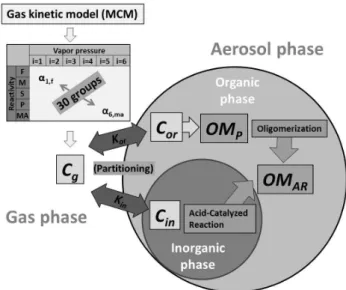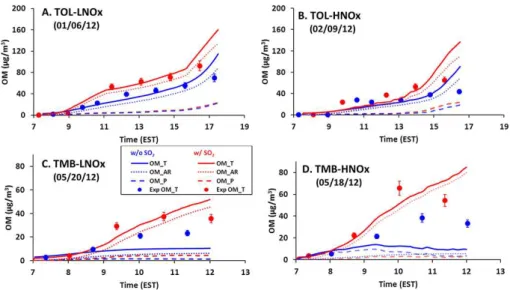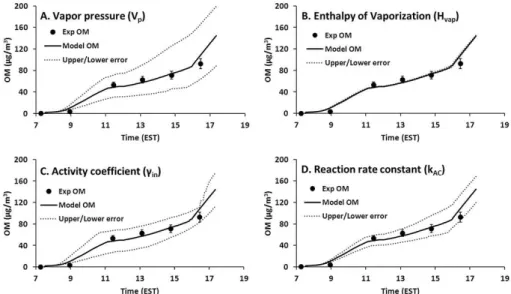Simulation of aromatic SOA formation using the lumping model integrated with explicit gas-phase kinetic mechanisms and aerosol-phase reactions
Texto
Imagem




Documentos relacionados
number of size bins, size structure method, coupled or uncoupled condensation, the volatility basis set (VBS) or traditional 2-product model for secondary organic aerosol formation,
Fractures were made in all samples. Figure 1 shows fractures of test bars cast from the examined high-aluminium iron in base condition and with the addition of vanadium
Abstract : This article presents to an analytical calculation methodology of the Steinmetz Equivalent Diagram Elements applied to the prediction of Eddy current loss in a
The AMS-PMF time series results are compared with molecular level detail of the CIMS gas-phase and MOVI-HRToF-CIMS aerosol- phase measurements, linking the HR-ToF-AMS high
We now apply the updated MOSAIC model to a series of polydisperse aerosol scenarios to investigate the influence of particle-phase reactions, phase state, and solute volatility on
We have built the largest indoor smog chamber in China, and initial characterization experiments described in this pa- per demonstrate that our GIG-CAS smog chamber facility can be
Fast measurements of aerosol and gas-phase constituents coupled with the ISORROPIA-II thermodynamic equilibrium model are used to study the partitioning of semivolatile
The modelled relative amount and composition of oligomer SOA in each particle layer depends on (1) the monomer SOA composition, (2) the hydrogen ion concen- tration, (3) the

![Fig. 5. Time profiles of the simulated OM and aerosol acidity ([H + ], mol L − 1 in inorganic aerosol) in four different inorganic aerosols:](https://thumb-eu.123doks.com/thumbv2/123dok_br/16403799.193814/10.892.191.703.97.393/profiles-simulated-aerosol-acidity-inorganic-different-inorganic-aerosols.webp)
